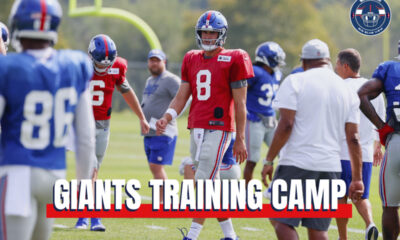
It’s been an okay start for the Cleveland Cavaliers. They sit 7-6, eighth in the Eastern Conference in a year where a top-four seed was very attainable for them. To be fair, they’ve had injuries, but lots of teams have them. It’s been somewhat disappointing, but it’s also still very early. However, With the ho-hum start, questions are being asked, and many center around coach J.B. Bickerstaff. He was already being scrutinized at the end of last season, and this season’s start is doing little to end that. The effectiveness of coaches can be debatable, but there are a few spaces where the coaches should be major influences. One of those spaces is drawing up set plays after dead balls, particularly after a timeout.
After Timeout Playcalling
Both by statistics and the eye test, the Cavaliers are not good out of timeouts. That means whatever play or offensive philosophy Bickerstaff is running out of a timeout clearly is not working. Generally, that’s not a good sign for a coach. Per pbpstats.com, the Cavs rank 30th in points per possession out of a timeout, at just .83. They are significantly worse out of timeouts than their general 1.12 points per possession, which is not ideal. This doesn’t look like a small sample size problem isolated to just this year, either. Last year, they were 28th. The year before that, they were a slightly better 21st, and in 2020-2021, Bickerstaff’s first full year as the head coach, they ranked dead last. Statistically, it’s a common trend of being one of the worst teams out of timeouts since Bickerstaff’s arrival.
The Eye Test
Stats tell most of the story, but even looking at the plays themselves leaves things to be desired. Of course, when they don’t work, it’s generally not going to look pretty, but most plays are fairly basic sets of screens or cuts, and most are run for the ball handler and often consist of just one or two actions. Against the Detroit Pistons (a game which they won), they had three plays out of timeouts.
Let’s take a look at them.
Cavs Pistons OoT Play 1 pic.twitter.com/wFVPKHG4L9
— Patrick Yen (@pyen117) November 21, 2023
Evan Mobley receives the ball from Max Strus, who runs into the corner, takes a handoff, and forces a switch. Darius Garland and Georges Niang cross on the other side of the court, but it becomes pretty clear that the play will focus on Mobley and Strus. Strus does deliver the ball to Mobley in a the post with a slight mismatch, which isn’t bad. The play does end in a contested fadeaway that misses, though, which is not a great result.
Cavs Pistons OoT Play 2 pic.twitter.com/byBMMJvYZn
— Patrick Yen (@pyen117) November 21, 2023
Mobley screens for Caris LeVert, and then Niang and Mobley screen for Garland to try and free him up. However, LeVert doesn’t wait for the action to develop and ends up just taking it straight into the larger Isaiah Stewart for a miss.
Cavs Pistons OoT Play 3 pic.twitter.com/Wai5sWrkcm
— Patrick Yen (@pyen117) November 21, 2023
The play starts with Strus and Mobley setting a double screen for Garland, but it’s half-hearted at best. Strus rolls into the corner after Garland dishes to LeVert, but Strus is followed the whole way, and it ends in a Garland isolation. He scores, but the play was not helpful.
Bottom Line?
Whether judging the plays run out of these timeouts by their results (one made basket out of three) or the look they got (all three were contested), it’s not great. The play designs themselves are often simplistic, and the players are frequently messing up basic elements like screens. Or they make the wrong decision. Both problems fall on coaching.
It can be hard to judge coaches’ efficacy, but it’s clear timeouts aren’t working. It’s something that has plagued Bickerstaff’s entire tenure and is unlikely to change now. It’s probably not significant enough to get someone fired, but it can certainly contribute, especially if things don’t turn around for the Cavaliers and soon.
********************************************
Patrick Yen is a contributor on Back Sports Page. He has written for NBC, SB Nation, and a few more websites in his four-year sports journalism career. He has been the Back Sports Page beat writer for the Philadelphia 76ers and now the Cleveland Cavaliers. Patrick, a graduate from Ohio State University, was born in Philadelphia, Pennsylvania, but moved to Columbus, Ohio, early in his life and has lived there ever since. You can find more of Patrick on Twitter @pyen117.












